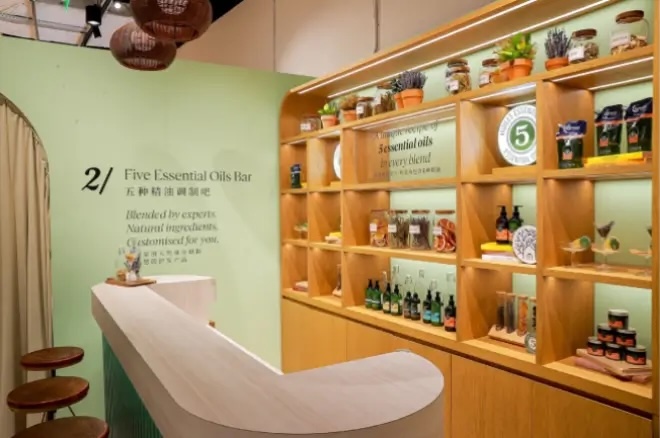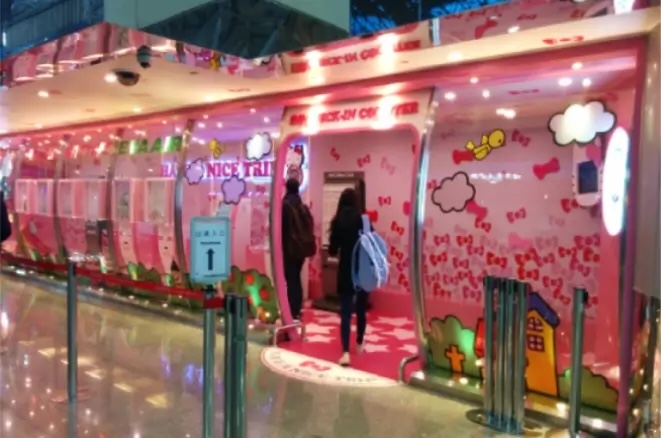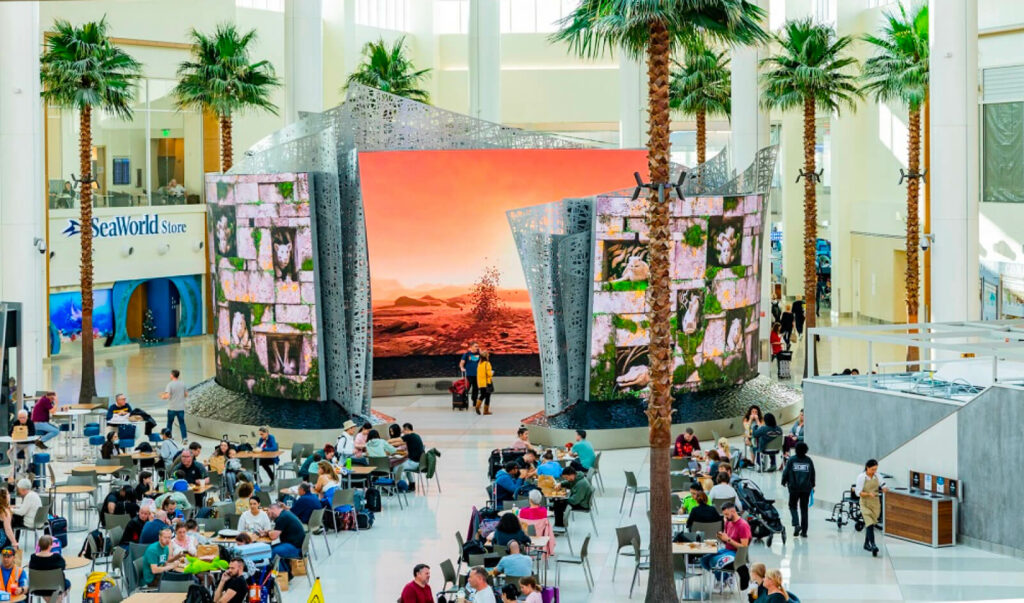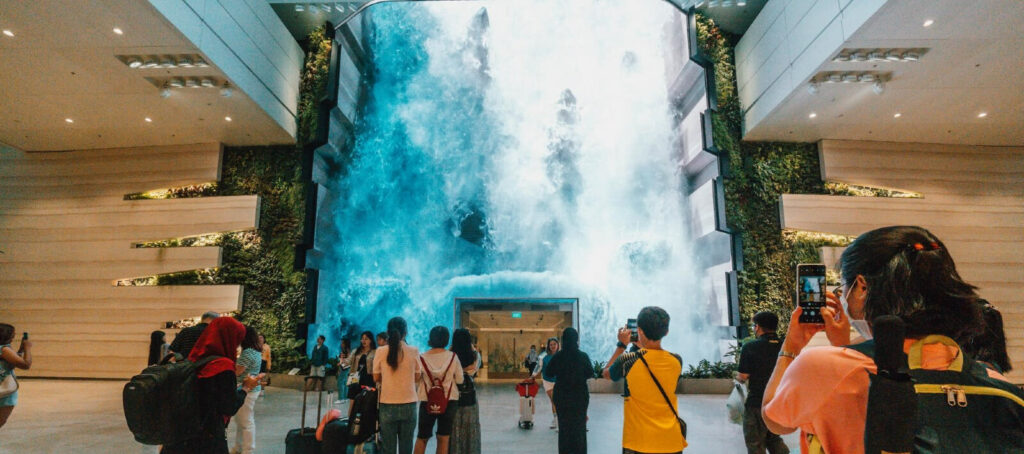However, airports are struggling to create entertainment zones that generate revenue as well as footfall. We have researched a variety of different airport models to identify the key opportunities for commercial return.
If you are after direct sales and airport concession fees, pure entertainment concepts might be challenging. With medium to low transaction value and sometimes large footprints, the sales density can be weak. These activities can be too niche or too time consuming to generate high traffic.
This is where Hybrid concepts bring value. When entertainment is clubbed with F&B, convenience retail, and accessories or other associated services, the broader offer attracts more traffic and allows cross selling.
Many innovative and exciting Hybrid concepts have recently opened in downtown shopping centers and high streets in Dubai, Dallas, Manchester and other global destinations. Airports need to take inspiration from these to stay ahead of the trend.
L’OCCITANE Group has opened a Hotel pop-up at the cdf Sanya International Duty-Free Shopping Complex China Duty Free Group.
The experiences takes visitors on an enchanting interactive experience as they explore five distinct zones: the Almond Forest & Spa, Oils Bar, Gift Shop, and immersive digital screens.
For example, Microsoft has set up Xbox gaming lounges in airports like London Heathrow and New York JFK, offering passengers a place to play video games while waiting for their flights. Taiwan Taoyuan International Airport has created Hello Kitty-themed areas. Sponsored by Sanrio, these areas feature Hello Kitty-themed decorations, seating, and activities, appealing to fans of the character.
Changi Airport Group transformed Terminal 3 into a Hall of Games “wonderland of fun” with Hasbro Gaming (pictured above) and “’phygital’ versions of well-known games, including Monopoly, Connect 4, Twister and more. Additionally, airports such as Copenhagen Airport have LEGO-sponsored play areas for children, providing entertainment while promoting the LEGO brand.
When working on airport commercial planning to maximize spend per passenger, our objective is to guide passengers in front or across commercial zones and then retain them in these areas.
By locating leisure and entertainment activities at the core of the commercial zones, they act as footfall drivers as well as increase the dwell time spent within the commercial spaces therefore benefit retail and F&B units nearby.
Some of the most notable airports such as Singapore Changi and Kuala Lumpur International Airport in Malaysia have focused more on footfall driving spaces, rather than pure revenue generating zones. These airports have chosen to feature areas such as jungle boardwalks with a tropical rainforest experience, various art exhibitions, and relaxation lounges.
has reimagined the passenger experience, welcoming travellers with two compelling multimedia installations. The ‘Moment Vault’, an interactive 360-degree immersive experience uses motion capture to integrate passenger silhouettes with dynamic content.
A multi-sensory entertainment experience, which engages customers through their five senses will trigger an emotional response before the cognitive and rational decision-making has a chance to. Shoppers that are therefore engaged through all five senses are more likely to feel happy and relaxed and make purchases.
Multi-sensory entertainment or leisure experiences can take various forms and are applied across different domains such as interactive art installations, training simulations that use multiple senses to replicate real-world scenarios, multisensory shows, such as performances that combine visual effects, music, and sometimes scents or other sensory elements.
At Changi’s newly revamped Terminal 2 (T2), a landmark feature at the heart of the airside departure hall stands out. The Wonderfall, is a 14-metre-tall digital waterfall made up of 892 flat and flexi-curved tiles, which integrate along the green wall. The sound of piano music and rushing water reverberates throughout the terminal, creating a magical and majestic atmosphere for passengers and visitors alike.
Whilst direct profitability might be hard to achieve from entertainment activities alone, the combined benefits on passenger behaviours, footfall, and dwell time can generate high collateral revenues.
Some might say such activities also influence travellers’ decision when buying flight tickets. Passengers may favour booking a connecting flight in airports that offer memorable and enticing entertainment…..but this is another topic!
Implementing and designing entertainment activities must be highly customized. This is due to the unique and differing commercial strategies, positioning, mix, and terminal spatial constraints individual to every airport.
As airports look to explore these opportunities, Altavia Travel Retail are well placed to leverage their data-driven research and design capabilities to deliver world-class terminal entertainment spaces. By engaging customers across diverse channels, senses, and environments, we aim to maximize return and experience within the evolving aviation landscape.









